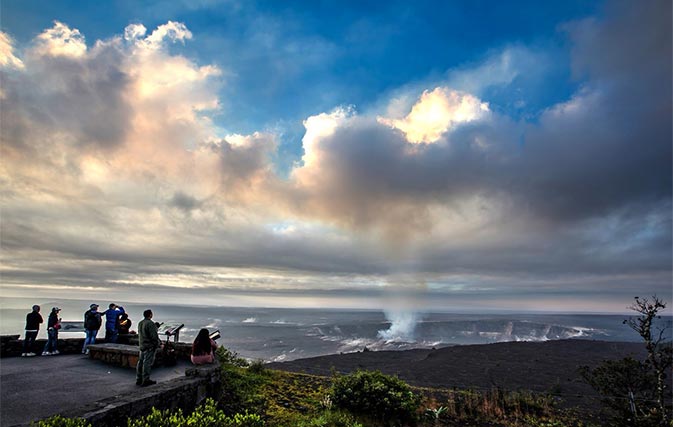HONOLULU — In response to increased volcanic activity and a new flow of lava that began on May 3 from Kilauea volcano on the island of Hawaii, state and county government agencies are assuring travellers the impact is limited to a remote region on the east side, far away from the rest of the Hawaiian Islands.
Hawaii Governor David Ige stated, “We are allocating all necessary state resources to keep our residents safe in this rural area on the island of Hawaii where the volcanic activity is occurring. We have heard from people around the world concerned about Hawaii’s welfare and want to reassure everyone that this is limited to a remote region on the slopes of Kilauea volcano. Everywhere else in the Hawaiian Islands is not affected.”
George D. Szigeti, president and CEO of the Hawaii Tourism Authority, commented that the safety of residents and visitors is always the tourism industry’s top priority, while adding that travellers with a trip already booked to the Hawaiian Islands or in the planning stages can be put at ease knowing their vacation experience will be unaffected.
“No flights into airports anywhere in Hawaii are being impacted by Kilauea volcano and the area where the lava is coming to the surface is very far from resort areas throughout the Hawaiian Islands where visitor accommodations are located.”
“Travellers can enjoy their vacation experience in the Hawaiian Islands to the fullest, with the only word of caution being that they stay out of areas closed to the public for their own safety.”
The closest resort areas, in Kona and the Kohala Coast on the island of Hawaii’s west side, are more than 100 miles away from where the lava flow is occurring and shielded by the massive mountains of Maunakea and Maunaloa. Resort areas located on Oahu and Kauai, and in Maui County, are located hundreds of miles from Kilauea volcano.
Hawai‘i Volcanoes National Park partially reopened Sunday, 5/6/18 at 3 p.m. following a sequence of large, violent earthquakes that prompted a 2-day closure and evacuation of park visitors and staff last Friday. Limited services. Mahalo for your patience! NPS Photo/Janice Wei pic.twitter.com/yJMEwk7DDg
— Hawaii Volcanoes NPS (@Volcanoes_NPS) May 7, 2018
Kilauea has been an active volcano since 1983 and is one of Hawai’i’s most popular attractions, with residents and visitors drawn to the wonder of seeing nature at work in the creation of new land via helicopter and ground tours or visits to Hawaii Volcanoes National Park.
Due to the volcanic activity there is a no-fly zone over Kilauea volcano. In addition, Hawaii Volcanoes National Park was closed on May 4 until further notice because of damage caused by earthquakes and aftershocks in the area.
The number of homes destroyed by Kilauea volcano jumped to 26 on Sunday as scientists reported lava spewing more than 200 feet (61 metres) into the air.
In revised figures, Hawaii County officials said another four unspecified structures were covered by lava.
Some of the more than 1,700 people who evacuated prepared for the possibility they may not return for quite some time.
Lava has spread around 387,500 square feet (36,000 square meters) surrounding the most active fissure, though the rate of movement is slow. There was no indication when the lava might stop or how far it might spread.
As this situation continues to evolve, for the latest updates on the volcanic activity on the island of Hawaii, check the following websites:
Hawai’i County Civil Defense: hawaiicounty.gov/active-alerts
Hawaiian Volcano Observatory: hvo.wr.usgs.gov
Travellers planning a trip to the Hawaiian Islands who have questions can contact the Hawai’i Tourism United States Call Center at 1-800-GOHAWAII (1-800-464-2924).
With file from The Associated Press

